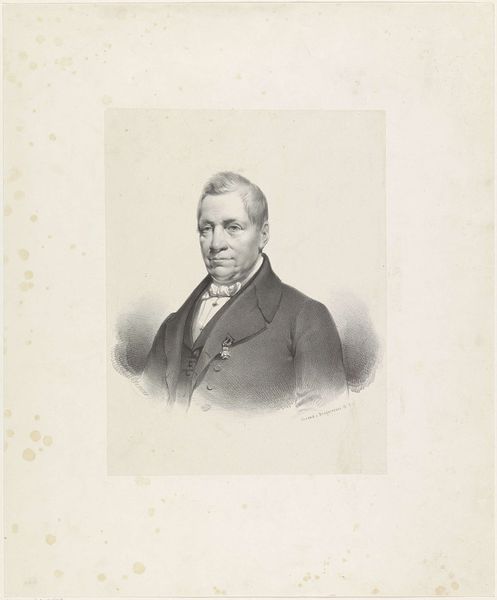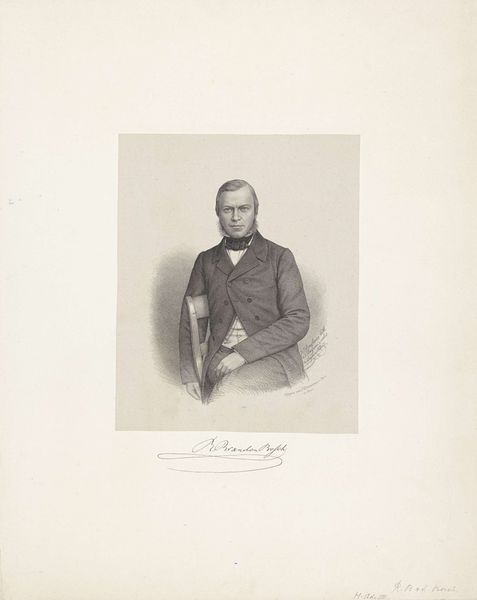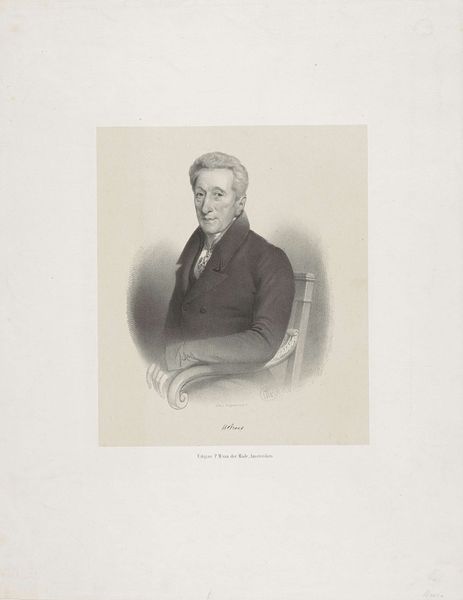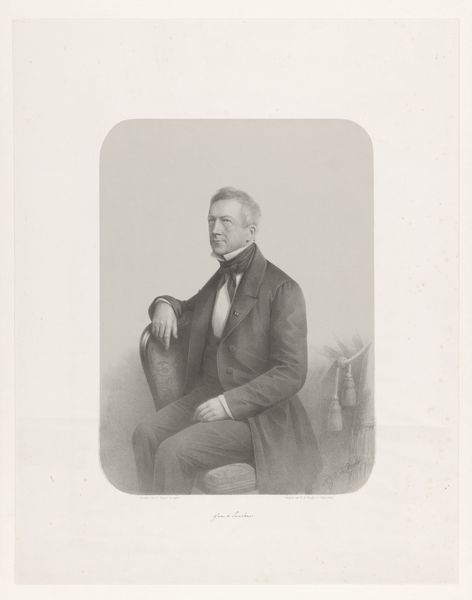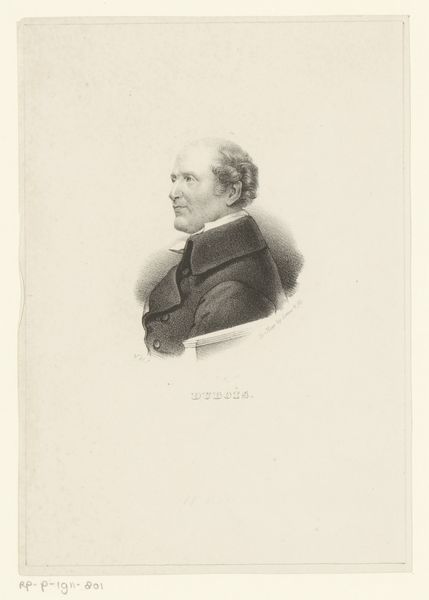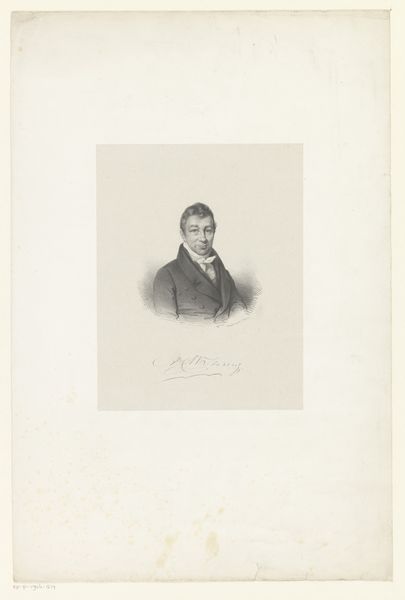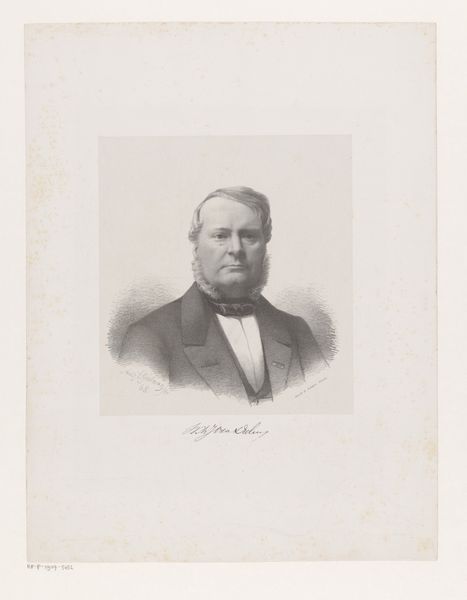
print, engraving
#
portrait
# print
#
old engraving style
#
engraving
#
realism
Dimensions: height 515 mm, width 350 mm
Copyright: Rijks Museum: Open Domain
This is a portrait of an unknown man, made by Gerhardus Fredericus Eilbracht, with lithography. Lithography is a printing process, which relies on the simple principle that oil and water don't mix. The artist would have used a greasy crayon to draw this image onto a flat slab of limestone, before treating it with a chemical solution. Then, the stone is dampened with water, which is repelled by the greasy areas of the drawing. When oily ink is applied, it sticks only to those drawn areas. Finally, paper is pressed onto the stone, transferring the image. Notice the fine lines and subtle gradations of tone. Lithography allowed for the relatively easy reproduction of images, contributing to the growth of visual culture in the 19th century. It also democratized art, making portraits and other images more accessible to a wider audience, which changed the traditional hierarchies of artistic production. Considering the materials, making, and social context of this artwork helps us appreciate its full meaning, blurring the lines between fine art and craft.
Comments
No comments
Be the first to comment and join the conversation on the ultimate creative platform.




